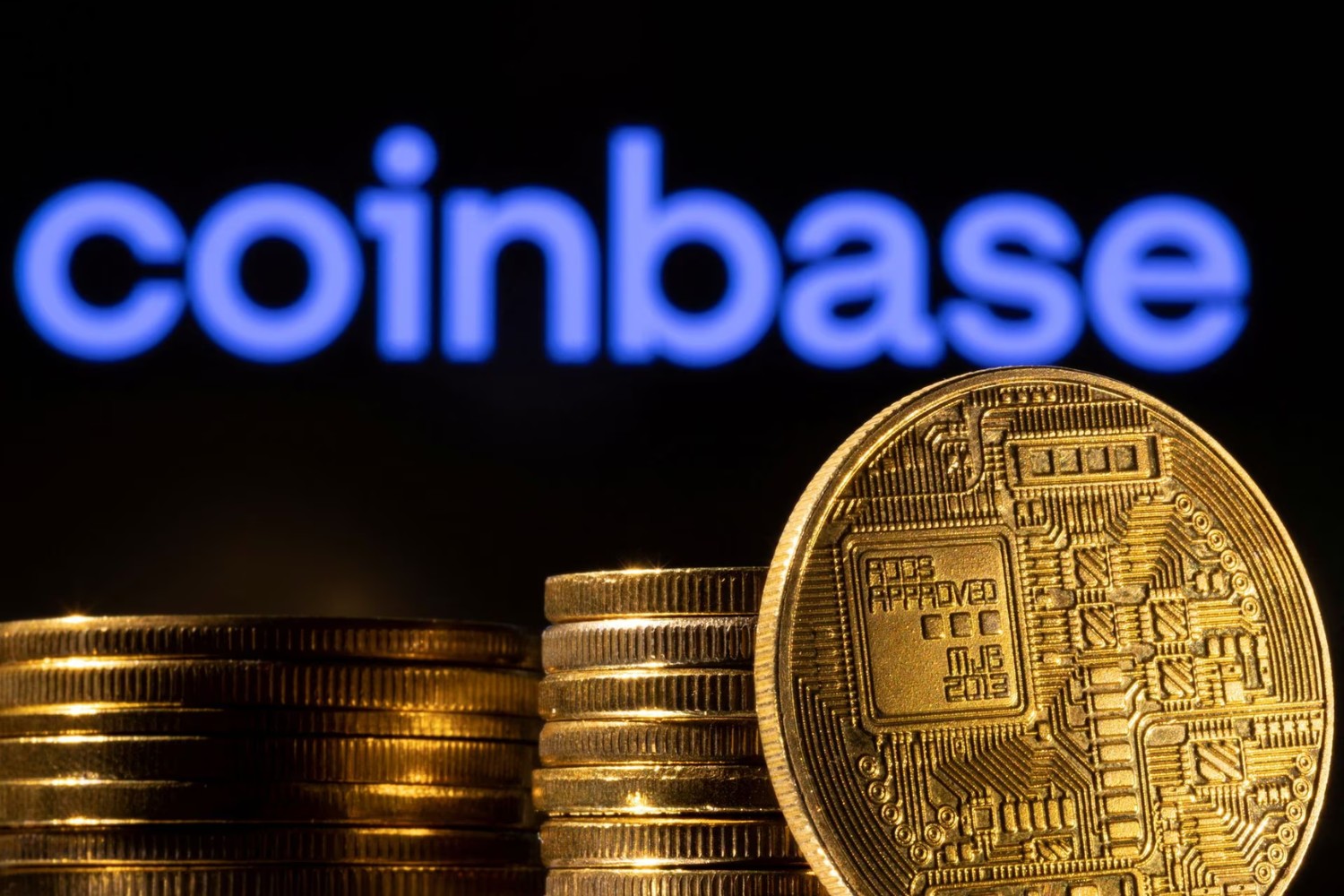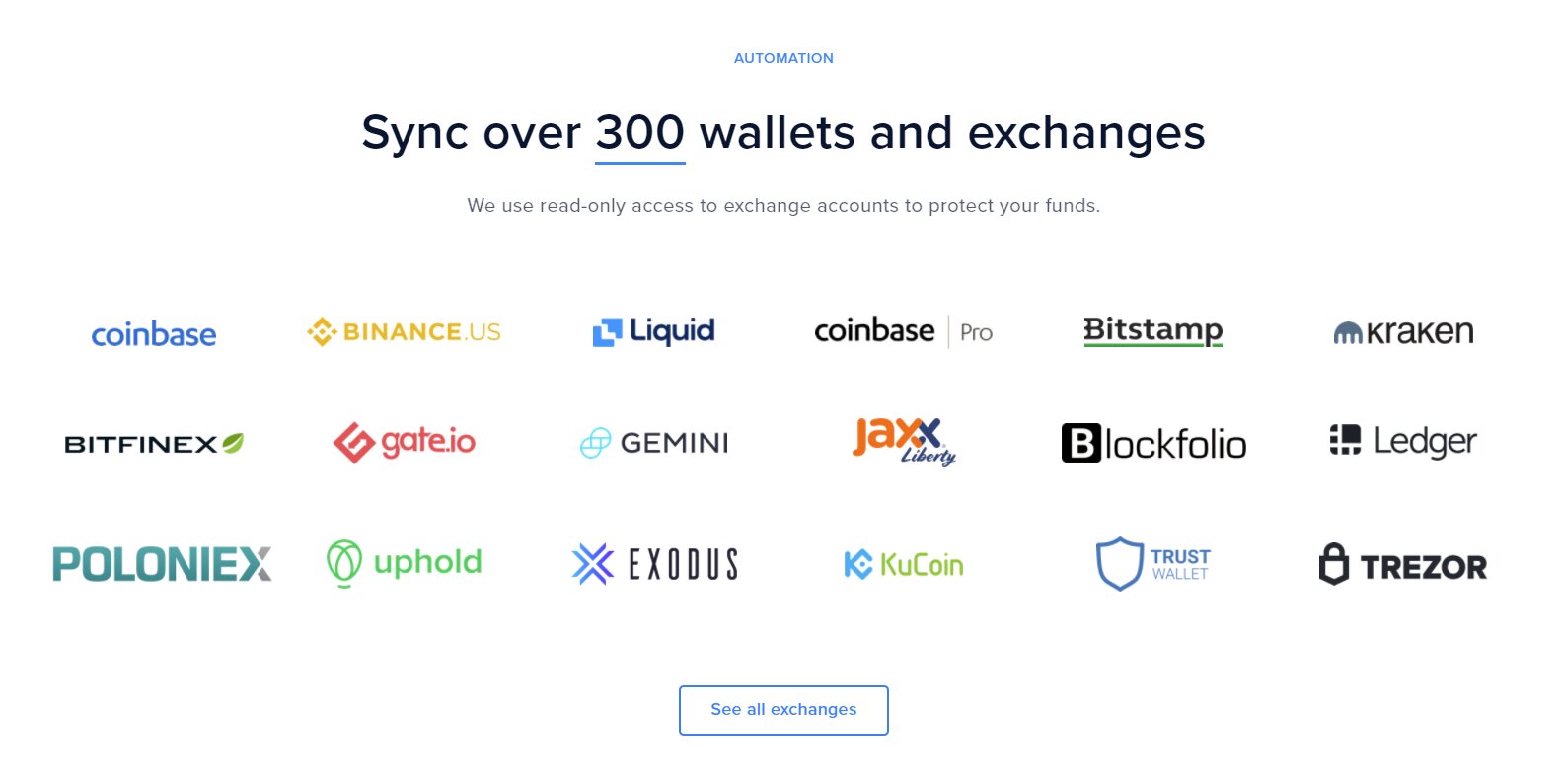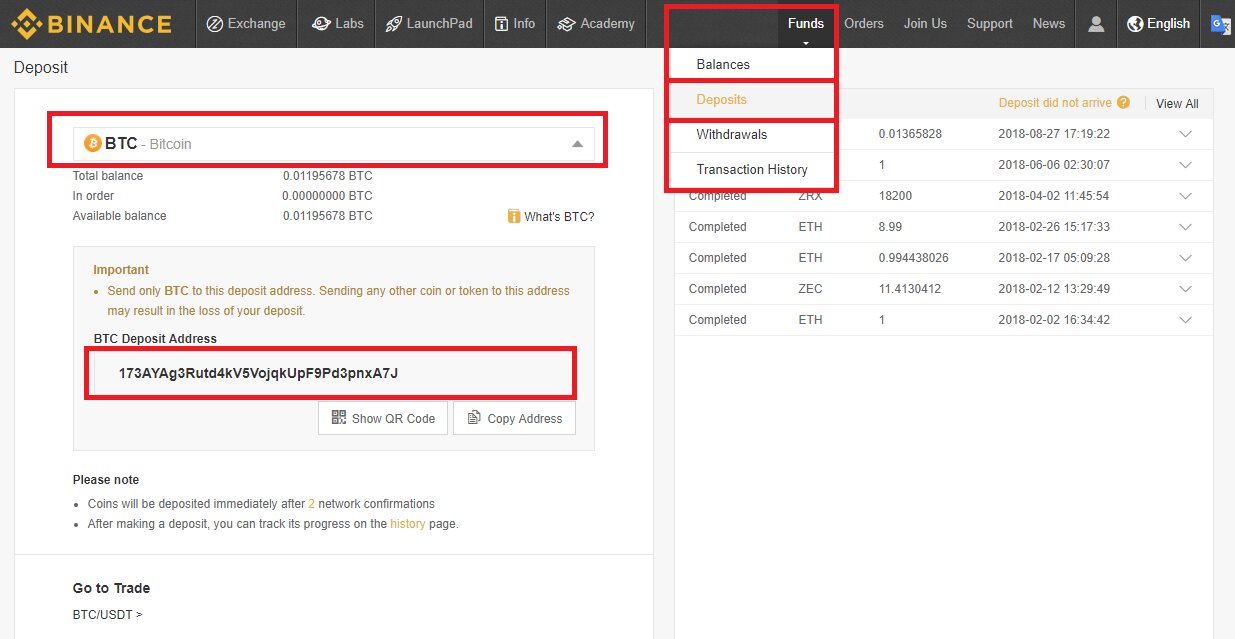Introduction
Welcome to our guide on how to move Bitcoin (BTC) to stablecoin on Coinbase. With the increasing popularity of cryptocurrencies, it’s essential to have a comprehensive understanding of how to navigate the crypto landscape. Stablecoins provide stability to crypto investments, which is particularly crucial in a volatile market. In this article, we’ll explore the benefits of using stablecoins, the reasons for moving BTC to stablecoin, and provide you with a step-by-step guide on how to do it on the Coinbase platform.
Before diving into the process, let’s briefly explain what a stablecoin is. A stablecoin is a type of cryptocurrency that is designed to maintain a stable value by pegging it to an underlying asset, typically a fiat currency like the US Dollar (USD). This ensures that the value of the stablecoin remains relatively constant and unaffected by the market volatility experienced by other cryptocurrencies like Bitcoin or Ethereum.
The benefits of using stablecoins are numerous. First and foremost, it allows cryptocurrency investors to hedge against market volatility. By converting your BTC to stablecoin, you can protect your funds from sudden price fluctuations and enjoy a consistent value. Moreover, stablecoins offer the convenience of quick transactions and global accessibility. Since stablecoins are not tied to any specific country, they can be transferred and used internationally without any hassle or additional fees.
In the following sections, we will guide you through the process of moving BTC to stablecoin on Coinbase, one of the most popular and trusted cryptocurrency exchange platforms. So let’s get started!
What is a Stablecoin?
A stablecoin is a type of cryptocurrency that is designed to maintain a stable value by pegging it to an underlying asset, typically a fiat currency like the US Dollar (USD), or a commodity like gold. The primary goal of stablecoins is to provide stability and reduce the volatility that is often associated with other cryptocurrencies like Bitcoin or Ethereum.
Stablecoins achieve stability by utilizing various mechanisms. The most common mechanism is pegging the value of the stablecoin to a specific fiat currency at a 1:1 ratio. This means that for every stablecoin in circulation, there is an equivalent amount of the underlying asset held in reserve. For example, a stablecoin pegged to the US Dollar would be backed by an equivalent amount of USD held in a bank account or a trusted custodian. This ensures that the value of the stablecoin remains relatively constant and unaffected by market fluctuations.
Another mechanism used by stablecoins is algorithmic stability. In this approach, the stablecoin’s value is maintained through the use of smart contracts and algorithms. These algorithms monitor the supply and demand of the stablecoin and make adjustments to the circulation to keep its value stable. For instance, if the demand for the stablecoin increases, the algorithm can issue more coins to maintain the stability.
Stablecoins offer several advantages compared to other cryptocurrencies. Firstly, they provide a more reliable store of value. While cryptocurrencies like Bitcoin have experienced significant price volatility, stablecoins offer a stable alternative for those who prefer a predictable value for their digital assets.
Additionally, stablecoins can be used as a medium of exchange in everyday transactions. Their stable value makes them suitable for purchasing goods and services without worrying about price fluctuations. This utility opens up opportunities for stablecoins to be integrated into various sectors such as e-commerce, remittances, and cross-border payments.
Furthermore, stablecoins provide a bridge between the traditional financial system and the world of cryptocurrencies. They allow users to easily move funds between crypto exchanges and traditional banks without the need to convert their cryptocurrencies into fiat currencies, thereby reducing transaction costs and time.
To conclude, stablecoins offer stability, liquidity, and utility in the often volatile world of cryptocurrencies. They provide a reliable means of storing value, conducting transactions, and bridging the gap between traditional finance and the emerging digital economy.
What are the Benefits of Using Stablecoin?
Using stablecoins offers a range of benefits that make them an attractive option for cryptocurrency users. Let’s explore some of these advantages:
1. Stability: As the name suggests, stablecoins provide stability in the volatile world of cryptocurrencies. While traditional cryptocurrencies like Bitcoin can experience significant price fluctuations, stablecoins are designed to maintain a stable value. This stability makes them a reliable store of value and allows users to mitigate the risks associated with market volatility.
2. Hedging against Volatility: By converting your crypto assets, such as Bitcoin or Ethereum, into stablecoins, you can effectively hedge against market volatility. This means that even if the price of Bitcoin or other cryptocurrencies experiences a sudden drop, the value of your stablecoin holdings will remain relatively constant. It provides a way to protect the value of your investments and reduce the impact of market downturns.
3. Quick and Low-Cost Transactions: Stablecoins facilitate fast and low-cost transactions, making them an ideal choice for day-to-day transactions. Whether you’re purchasing goods online or transferring funds internationally, stablecoins enable quick and seamless transactions without the need for intermediaries like banks. This not only saves time but also reduces transaction fees.
4. Global Accessibility: Stablecoins are not tied to any specific country, making them easily accessible to users worldwide. Unlike traditional fiat currencies that may require international bank transfers and incur high fees, stablecoins can be transferred across borders instantly and at a fraction of the cost. This global accessibility opens up opportunities for cross-border commerce and financial inclusion.
5. Privacy and Security: Stablecoin transactions offer privacy and security benefits. While not entirely anonymous, stablecoin transactions can provide a certain level of privacy compared to traditional banking transactions. Additionally, stablecoins leverage the security features of blockchain technology, such as encryption and decentralized storage, to ensure the safety of funds and protect against fraudulent activities.
6. Interoperability: Stablecoins can be easily integrated into various decentralized applications (DApps) and smart contracts. Their stable value and compatibility with blockchain technology make them versatile for use in sectors like decentralized finance (DeFi), where they can be used as collateral or for lending and borrowing purposes. This interoperability enhances the utility and value of stablecoins within the broader crypto ecosystem.
To sum up, the benefits of using stablecoins include stability, hedging against volatility, quick and low-cost transactions, global accessibility, privacy and security, and interoperability with various applications. These advantages make stablecoins a valuable asset and a practical solution for individuals and businesses seeking stability and efficiency in their cryptocurrency transactions.
Why Move BTC to Stablecoin?
There are several compelling reasons why you may choose to move your Bitcoin (BTC) holdings to a stablecoin. Let’s explore some of the main motivations:
1. Hedging Against Market Volatility: Bitcoin is known for its price volatility, with its value fluctuating significantly over short periods. By converting your BTC to stablecoin, you can protect your funds from sudden price drops and enjoy a more stable value. This can be especially useful in times of market uncertainty or when you want to secure your gains.
2. Preservation of Value: Stablecoins are designed to maintain a stable value, typically pegged to a fiat currency like the US Dollar. Unlike Bitcoin, which can experience rapid price changes, stablecoins offer a more predictable and steady value. Moving your BTC to stablecoin allows you to preserve the value of your holdings and reduce the risk of potential losses due to market downturns.
3. Avoiding Time-Sensitive Transactions: Bitcoin transactions can sometimes take longer to confirm on the blockchain, especially during periods of high network congestion. For time-sensitive transactions or when you need quick access to the funds, moving BTC to stablecoin can provide a more efficient solution. Stablecoin transactions are usually faster and more reliable, allowing for seamless transfers and quick availability of funds.
4. Easy Integration with Exchanges and Platforms: Stablecoins are widely supported by cryptocurrency exchanges and platforms, including popular ones like Coinbase. By converting your BTC to stablecoin, you gain access to a variety of trading pairs and liquidity pools. This enables you to take advantage of various opportunities and navigate the crypto market more efficiently.
5. Diversification and Risk Management: Converting BTC to stablecoin allows you to diversify your holdings and manage risk effectively. While Bitcoin can provide potential high returns, it also carries higher risks due to its volatility. By moving a portion of your BTC to stablecoin, you can reduce your exposure to market fluctuations and achieve a more balanced cryptocurrency portfolio.
6. Storing Value in Fiat Currency Equivalent: If you anticipate a need to convert your crypto assets into fiat currency for future expenses or investment opportunities, moving BTC to stablecoin provides a convenient solution. Stablecoins, pegged to a fiat currency, offer a seamless transition from the crypto realm to the traditional financial system, making it easier to access and utilize the value of your digital assets.
7. Peace of Mind: By moving your BTC to stablecoin, you can have peace of mind knowing that the value of your holdings is relatively stable. This can reduce stress and anxiety associated with volatile markets, especially for long-term investors or individuals who rely on cryptocurrencies for their financial needs.
In summary, moving BTC to stablecoin offers several advantages, including hedging against market volatility, preserving value, ensuring faster transactions, accessing a wider range of platforms, diversifying your portfolio, facilitating conversion to fiat currency, and providing peace of mind. Consider your specific goals and risk tolerance when deciding whether to move your BTC to stablecoin.
Step 1: Creating a Coinbase Account
The first step in moving BTC to stablecoin on Coinbase is to create an account on the platform. Coinbase is a reputable and user-friendly cryptocurrency exchange that offers a seamless experience for buying, selling, and storing cryptocurrencies. Follow these steps to create a Coinbase account:
1. Visit Coinbase Website: Open your web browser and go to the official Coinbase website (www.coinbase.com).
2. Click on “Get Started”: On the homepage, click on the “Get Started” button located at the top right corner. This will begin the process of creating your account.
3. Fill in the Required Information: Provide your email address, create a strong password, and click on the checkbox to agree to the Coinbase User Agreement and Privacy Policy. Verify that you are not a robot by completing the reCAPTCHA, and then click on the “Create Account” button.
4. Verify Your Email: After creating your account, Coinbase will send a verification email to the address you provided. Go to your email inbox and click on the verification link to confirm your email and activate your Coinbase account.
5. Set Up Two-Factor Authentication (2FA): Once you have verified your email, it is highly recommended to set up two-factor authentication (2FA) for added security. Coinbase supports various 2FA methods, including SMS-based codes, authenticator apps like Google Authenticator, or hardware security keys. Choose your preferred method and follow the prompts to complete the setup.
6. Complete Account Setup: After setting up 2FA, Coinbase will guide you through a series of steps to complete your account setup. This may include providing additional personal information and verifying your identity, depending on your location and the level of verification required. Follow the instructions on the screen and provide the necessary information or documentation as requested.
7. Accept Coinbase Terms and Conditions: Once you have completed all the necessary steps, review Coinbase’s Terms and Conditions and Privacy Policy. If you agree to the terms, click on the checkbox to indicate your acceptance, and then click on the “Create Account” or “Finish” button to finalize the account creation process.
8. Verify Your Phone Number: Coinbase will require you to verify your phone number for added security. Enter your phone number and click on the “Send Code” button. You will receive a verification code on your phone, which you need to enter on the Coinbase website to confirm your phone number.
9. Congratulations! Your Coinbase Account is Created: Once you have completed the phone number verification, you have successfully created your Coinbase account. You can now proceed to the next steps to transfer your BTC to stablecoin on the platform.
Creating a Coinbase account is straightforward and typically takes only a few minutes. Ensure that you provide accurate information and follow the verification process, as this will be crucial for accessing all the features and services offered by Coinbase.
Step 2: Setting Up Two-Factor Authentication
Two-factor authentication (2FA) is an essential security measure that adds an extra layer of protection to your Coinbase account. By enabling 2FA, you add an additional step to the login process, requiring both your password and a second authentication factor to access your account. Follow the steps below to set up two-factor authentication on Coinbase:
1. Log in to Your Coinbase Account: Open your web browser and go to the Coinbase website (www.coinbase.com). Enter your email and password to log in to your account.
2. Access Security Settings: Once logged in, click on your profile icon in the top right corner of the Coinbase dashboard. From the dropdown menu, select “Settings” and then click on the “Security” tab.
3. Enable Two-Factor Authentication: In the Security settings, you will see the Two-Factor Authentication section. Click on the “Enable” button next to the Two-Factor Authentication option.
4. Choose 2FA Method: Coinbase offers multiple options for setting up 2FA. You can choose between SMS-based codes, authenticator apps like Google Authenticator, or hardware security keys. Select your preferred method and click on the “Next” button.
5. Set Up SMS-Based 2FA: If you choose SMS-based codes, enter your mobile phone number and click on the “Send Code” button. You will receive a verification code on your phone, which you need to enter on the Coinbase website to confirm your phone number. Follow the on-screen instructions to complete the setup.
6. Set Up Authenticator App 2FA: If you select an authenticator app like Google Authenticator, you will see a QR code on the screen. Open your authenticator app and scan the QR code using the app’s built-in scanner. Alternatively, you can enter the code manually if prompted. The app will generate a unique verification code for Coinbase. Enter this code in the Coinbase website to complete the setup.
7. Test 2FA: Once you have completed the setup process, Coinbase will ask you to test your 2FA method. Follow the instructions provided to generate a verification code using your chosen 2FA method and enter it on the Coinbase website to confirm that everything is working correctly.
8. Backup Your 2FA: It is crucial to backup your 2FA codes or keys in case you lose access to your primary device or need to set up 2FA on another device. Coinbase provides backup codes that you can download and save securely. These codes can be used as an alternative to your primary 2FA method. It is highly recommended to store the backup codes in a secure location like a password manager or a physical offline backup.
9. Two-Factor Authentication is Enabled: After completing the setup and testing process, your 2FA will be enabled on your Coinbase account. From now on, whenever you log in to your Coinbase account, you will be prompted to enter a verification code from your chosen 2FA method, in addition to your email and password.
Setting up two-factor authentication adds an extra layer of security to your Coinbase account, safeguarding your funds and personal information. It is essential to ensure that your 2FA method is secure and that you keep your backup codes safe. With 2FA enabled, you can have peace of mind knowing that your Coinbase account is protected from unauthorized access.
Step 3: Verifying Your Identity on Coinbase
Verifying your identity on Coinbase is an important step to ensure the security and compliance of your account. By completing the identity verification process, you gain access to additional features and higher transaction limits. Follow the steps below to verify your identity on Coinbase:
1. Log in to Your Coinbase Account: Open your web browser and go to the Coinbase website (www.coinbase.com). Enter your email and password to log in to your account.
2. Access Account Settings: Once logged in, click on your profile icon in the top right corner of the Coinbase dashboard. From the dropdown menu, select “Settings” and then click on the “Identity Verification” tab.
3. Select Your Country: Under the Identity Verification section, you will see a dropdown menu to select your country of residence. Choose your country from the list provided.
4. Choose the Document Type: Depending on your country of residence, Coinbase may support different types of documents for identity verification, such as a passport, driver’s license, or national identification card. Select the appropriate document type from the options available.
5. Take a Photo of Your Document: Follow the instructions provided to take a clear, legible photo of the front and back of your selected document. If you are using a mobile device, you can use the Coinbase app to capture the images directly. If you are using a computer, you can upload the photos from your device.
6. Submit the Photos: Once you have taken or uploaded the required photos, click on the “Continue” button to submit the images for review. Ensure that the photos are clear, well-lit, and show all the necessary information on the document.
7. Complete Additional Verification: In some cases, Coinbase may require additional verification steps to confirm your identity. This may include providing additional documents, answering security questions, or recording a video selfie. Follow the instructions provided and provide the requested information or materials as requested.
8. Wait for Verification: After submitting your identity verification documents and completing any additional steps, you will need to wait for Coinbase to review and verify your information. The verification process may take anywhere from a few minutes to several days, depending on the volume of requests. Coinbase will notify you via email once your identity has been successfully verified.
9. Use Your Verified Coinbase Account: Once your identity is verified, you can enjoy increased account features, higher transaction limits, and a more secure trading experience on Coinbase. You can buy, sell, and trade cryptocurrencies with confidence, knowing that your account is fully verified and compliant.
It is important to provide accurate and up-to-date information during the identity verification process. Coinbase takes user security and regulatory compliance seriously, and completing the verification process ensures a safer and more reliable cryptocurrency trading experience.
Step 4: Transferring BTC from External Wallet to Coinbase
Transferring Bitcoin (BTC) from an external wallet to Coinbase allows you to have your BTC holdings within the Coinbase platform, providing easy access to trading, selling, or converting to other cryptocurrencies or stablecoins. Follow these steps to transfer BTC to Coinbase:
1. Log in to Your Coinbase Account: Open your web browser and go to the Coinbase website (www.coinbase.com). Enter your email and password to log in to your account.
2. Access the “Accounts” Tab: Once logged in, click on the “Accounts” tab in the navigation menu at the top of the Coinbase dashboard. This will display a list of all the cryptocurrencies supported by Coinbase.
3. Select “Receive” for Bitcoin: Find and select the “Bitcoin” (BTC) wallet from the list of cryptocurrencies. Click on the “Receive” button associated with the Bitcoin wallet. This will display a unique Bitcoin address specific to your Coinbase account.
4. Copy the Bitcoin Address: Ensure that you copy the entire Bitcoin address that is provided by Coinbase. Double-check for any spaces or extra characters to avoid errors during the transfer process. You can either click on the “Copy” button next to the address or manually highlight and copy the alphanumeric string.
5. Open Your External Wallet: Open the wallet you currently hold your Bitcoin in. This could be a software wallet, a hardware wallet, or any other type of Bitcoin wallet that you control.
6. Initiate a BTC Transfer: Look for the option to send or transfer Bitcoin within your external wallet. This process may vary depending on the wallet you are using, but typically involves navigating to the “Send” or “Transfer” section and entering the Bitcoin address you copied from Coinbase as the recipient.
7. Enter the Transfer Details: In your external wallet, enter the amount of BTC you wish to transfer to your Coinbase account. You may also need to specify any transaction fees or additional details required by your external wallet. Verify that the address you entered is correct, as transactions made to the wrong address cannot be reversed.
8. Confirm and Initiate the Transfer: Double-check all the details of the transfer, including the recipient address and the amount of BTC. Once you are certain, confirm the transaction and initiate the transfer from your external wallet. Your wallet will initiate the transfer and broadcast it to the Bitcoin network for confirmation.
9. Wait for Confirmation: Bitcoin transactions require confirmation on the blockchain, which can take some time depending on network congestion. You can track the progress of the transaction by searching for the transaction ID (TXID) in a blockchain explorer or within your external wallet. Once the transaction receives sufficient confirmations, it will be considered finalized.
10. Check Your Coinbase Account: After the transaction is confirmed, the BTC you transferred should appear in your Coinbase account. You can verify this by navigating to the “Accounts” tab on Coinbase and checking the Bitcoin (BTC) wallet balance.
Transferring BTC from an external wallet to Coinbase allows you to have control and easy access to your Bitcoin within the Coinbase platform. It is crucial to ensure the accuracy of the recipient address and to allow for sufficient transaction confirmations before considering the transfer as complete.
Step 5: Converting BTC to Stablecoin on Coinbase
Converting Bitcoin (BTC) to stablecoin on Coinbase provides the advantage of stability and security in the highly volatile cryptocurrency market. Follow these steps to convert your BTC to stablecoin on Coinbase:
1. Log in to Your Coinbase Account: Open your web browser and go to the Coinbase website (www.coinbase.com). Enter your email and password to log in to your account.
2. Access the “Accounts” Tab: Once logged in, click on the “Accounts” tab in the navigation menu at the top of the Coinbase dashboard. This will display a list of all the cryptocurrencies supported by Coinbase.
3. Select “Sell” for Bitcoin: Find and select the “Bitcoin” (BTC) wallet from the list of cryptocurrencies. Click on the “Sell” button associated with the Bitcoin wallet.
4. Set the Conversion Details: In the conversion screen, enter the amount of BTC you want to convert to stablecoin. You can either enter the amount in BTC or in the equivalent fiat currency value. Coinbase will automatically calculate the estimated amount of stablecoin you will receive based on the current exchange rate.
5. Choose Stablecoin as the Destination: From the “To” dropdown menu, select the stablecoin you wish to convert your BTC into. Coinbase supports various stablecoins like USD Coin (USDC), Tether (USDT), and DAI. Choose the stablecoin that aligns with your preferences and requirements.
6. Review Transaction Details: Take a moment to review the transaction details, including the estimated stablecoin amount, conversion rate, and any applicable fees. Ensure that the information is correct, as transactions on the blockchain are irreversible.
7. Confirm the Conversion: Once you are satisfied with the transaction details, click on the “Preview Sell” or “Confirm” button. Coinbase may prompt you to enter your account password or complete 2FA verification to confirm the conversion.
8. Wait for the Conversion: Coinbase will process the conversion from BTC to stablecoin. This process may take a few seconds or longer, depending on network congestion and the amount being converted. Coinbase will notify you once the conversion is complete.
9. Check Your Stablecoin Balance: After the conversion, the stablecoin you selected will appear in your Coinbase account. To verify, navigate to the “Accounts” tab on Coinbase and check the balance of the respective stablecoin wallet.
Note: It’s important to monitor the market conditions and exchange rates before converting your BTC to stablecoin. Prices may fluctuate, and it’s advisable to make the conversion when you are comfortable with the rate and have thoroughly considered your decision.
Converting BTC to stablecoin on Coinbase provides stability and a predictable value for your cryptocurrency holdings. It allows you to mitigate the risks associated with market volatility and opens up opportunities to utilize stablecoins for various transactions and investments.
Step 6: Withdrawing Stablecoin to Bank Account
Withdrawing stablecoin from your Coinbase account to your bank account allows you to convert your digital assets into fiat currency and access your funds in a traditional banking system. Follow these steps to withdraw stablecoin from Coinbase to your bank account:
1. Log in to Your Coinbase Account: Open your web browser and go to the Coinbase website (www.coinbase.com). Enter your email and password to log in to your account.
2. Access the “Accounts” Tab: Once logged in, click on the “Accounts” tab in the navigation menu at the top of the Coinbase dashboard. This will display a list of all the cryptocurrencies and stablecoins supported by Coinbase.
3. Select the Stablecoin to Withdraw: Locate and select the stablecoin you want to withdraw from your Coinbase account. Click on the “Send” or “Withdraw” button associated with the stablecoin wallet.
4. Enter the Withdrawal Details: In the withdrawal screen, enter the amount of stablecoin you want to withdraw to your bank account. Make sure to double-check and ensure the accuracy of the withdrawal amount.
5. Choose Bank Account as the Destination: From the “To” or “Destination” dropdown menu, select your linked bank account to which you want to withdraw the stablecoin. If you haven’t linked your bank account yet, follow the prompts to connect your bank account with Coinbase.
6. Verify the Withdrawal Details: Review the transaction details, including the withdrawal amount, any associated fees, and the bank account you have selected. Verify that the information is correct and complete.
7. Confirm the Withdrawal: Once you are satisfied with the withdrawal details, click on the “Preview Withdrawal” or “Confirm” button. Coinbase may prompt you to enter your account password or complete 2FA verification to confirm the withdrawal.
8. Wait for the Withdrawal: Coinbase will process the withdrawal of stablecoin to your bank account. The duration of the withdrawal may vary depending on the stability and speed of the blockchain network. Coinbase will notify you once the withdrawal is initiated.
9. Monitor Your Bank Account: After the withdrawal is initiated, monitor your bank account for the arrival of the funds. The timeframe for the funds to appear in your bank account may vary depending on your bank’s processing times and the specific withdrawal method used.
Note: Ensure that the information provided for your bank account, such as account number and routing number, is accurate to avoid any delays or potential issues with the withdrawal.
Withdrawing stablecoin to your bank account allows you to convert your digital assets into fiat currency and access your funds through traditional banking channels. This provides you with the flexibility and convenience of using your funds for everyday expenses or further investing in other financial instruments.
Conclusion
Moving Bitcoin (BTC) to stablecoin on Coinbase can provide stability, security, and convenience in the rapidly evolving cryptocurrency market. Stablecoins offer a reliable means of storing value, conducting transactions, and hedging against market volatility. By following the step-by-step guide outlined in this article, you can easily navigate the process of moving BTC to stablecoin on the Coinbase platform.
We began by explaining what stablecoins are and highlighting their benefits, including stability, hedging against volatility, quick transactions, global accessibility, privacy, and interoperability. Understanding these advantages can help you make informed decisions when considering the movement of your BTC to stablecoin.
We then delved into the practical steps involved in the process. We covered the creation of a Coinbase account, which serves as a gateway to the world of cryptocurrencies. Setting up two-factor authentication (2FA) was discussed as a critical security measure to protect your Coinbase account.
Verifying your identity on Coinbase is an essential step in ensuring compliance and increasing the functionality of your account. We provided guidance on how to successfully complete the identity verification process.
Transferring BTC from an external wallet to Coinbase allows you to consolidate your holdings on the platform. We outlined the steps involved in executing a smooth and accurate transfer.
The process of converting BTC to stablecoin on Coinbase was detailed next. This conversion allows you to enjoy the stability and reliability of a stablecoin while preserving the value of your BTC holdings.
Lastly, we explored the final step of withdrawing stablecoin from Coinbase to your bank account. This conversion into fiat currency enables easy access to your funds in traditional banking systems.
By following these steps, you can effectively navigate the process of moving BTC to stablecoin on Coinbase. However, it is important to continuously educate yourself about the latest developments in the cryptocurrency space and stay updated on the market conditions.
Remember to make informed decisions based on your individual goals, risk tolerance, and regulatory considerations. Always double-check addresses, transaction details, and security measures to ensure that your cryptocurrency journey is secure and successful.
With the knowledge gained from this guide, you are well-equipped to embark on your journey of moving BTC to stablecoin on Coinbase and enjoy the benefits of stability, security, and convenience in your cryptocurrency transactions.

























